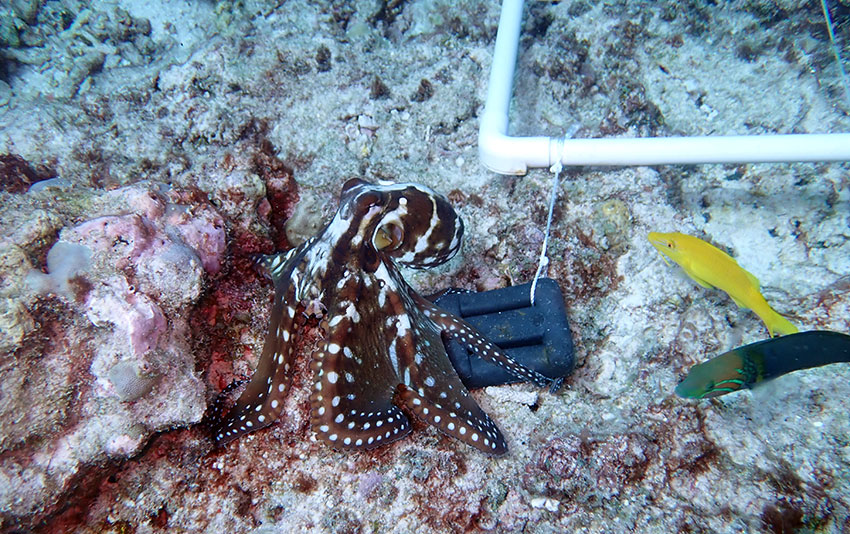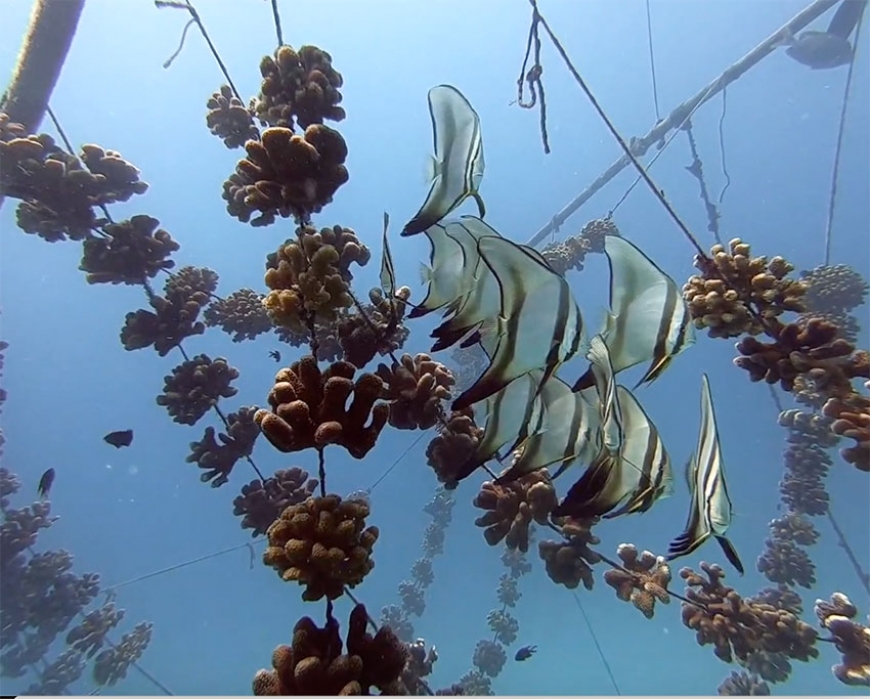The coral nursery is suspended at approximately 10 m depth and is currently stocked with around 700 colonies from the genus Pocillopora, an important reef building coral in Seychelles. These are now quite large and will be ready to transplant onto the reef soon. In the meantime, we do frequent nursery dives to clean away all the algae and biofouling organisms that otherwise compete with the corals. When we do this the resident batfish (who are already very curious creatures) get incredibly excited as all the barnacles and mussels we remove are tasty snacks for them! Every time you visit the nursery they will be hanging out beside the ropes, awaiting your arrival.

Not only this but whilst monitoring the fringing reef, fish are out there checking you’re doing it right! Frequently you will be concentrating on your survey – in my case that’s counting and measuring tiny coral recruits – where you feel a presence as though someone is watching you. Upon looking up, you’re face to face with a fish who’s come along to have a little nosey at what you’re doing. Actually, lots of the wildlife are curious about what you’re doing – for example this adorable young octopus was checking out my latest survey!
However, certain fish we encounter when out on the reef are a little less welcoming. Some species of Damselfish live within the branches of the Pocillopora colonies we work with and don’t like you cleaning or surveying near their coral. As they are very territorial, they aren’t afraid to fight you on it – good job they are so small!

The diving in the Seychelles is very different from other dives I have done (Indo-pacific, Caribbean and Mediterranean). The granitic reefs provide an interesting solid structure that attracts many herbivorous reef fishes making it appear to have a healthier baseline of coral than it actually does upon closer inspection. The Seychelles has been hit by two large bleaching events in the past 25 years. Seeing how the reefs have recovered and then were bleached again in 2016 and how we can help speed up the recovery process with our transplanted reef, is proving to be an interesting field of research. The project had very successful impacts with its first transplantation and hopefully we will be seeing similar results after our second lot of transplantation.
So far, I’m only half way through my internship but I’m really enjoying getting out to dive and collecting data on the reefs health. I’m looking forward to what the next six weeks have in store for us and to continue exploring the Seychelles in my spare time.
By Sophie Carolan - Reef Rescuers Volunteer

